La bauxite est un minéral non métallique principalement composé d'hydrates d'oxyde d'aluminium. Elle constitue la matière première principale pour la production d'aluminium électrolytique et est également largement utilisée dans les matériaux réfractaires, les abrasifs, l'industrie chimique et d'autres domaines. Dans le processus de broyage de la bauxite (aussi appelée minerai d'alumine ou minerai de bauxite), les broyeurs à boulets sont l'un des équipements les plus couramment utilisés, tandis que le broyage à sec et le broyage humide constituent les deux principales voies technologiques. L'analyse suivante s'appuie sur les principes du procédé, les différences fondamentales et les scénarios d'application afin de comprendre les caractéristiques et les choix d'application de ces deux procédés.
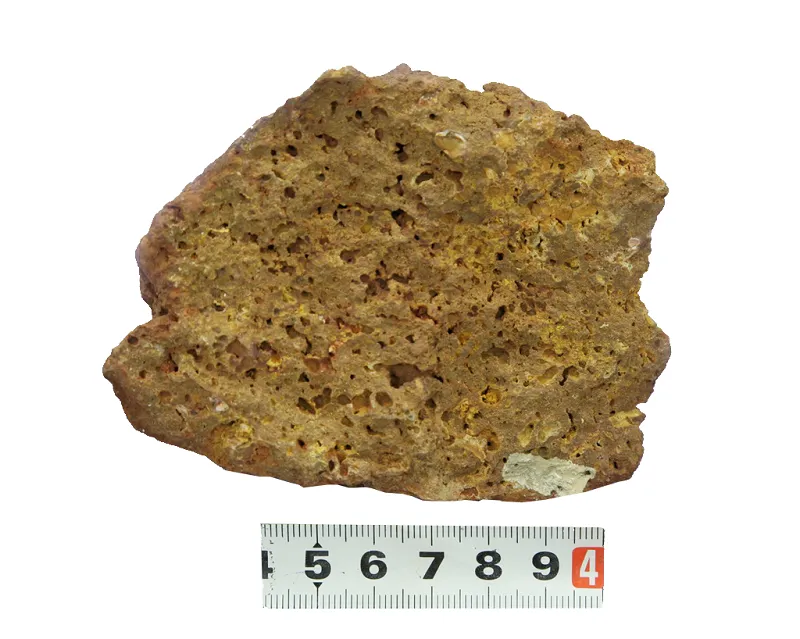
1. Comparaison des principes du processus
— Broyage à sec/broyage à boulets à sec
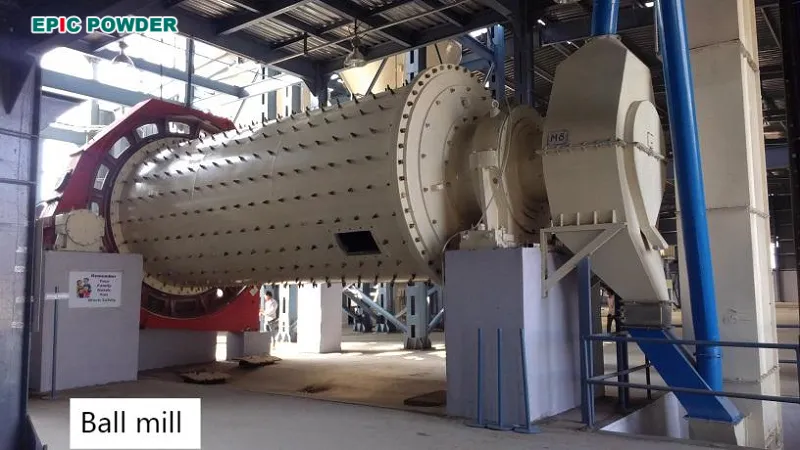
Principe: La bauxite brute est directement introduite dans un broyeur à boulets, où elle est concassée par l'impact et le broyage de billes d'acier, sans ajout d'eau ni d'autres liquides. Pendant le broyage, la classification est réalisée grâce à l'action du flux d'air (par exemple, avec un classificateur à air) pour séparer les produits finis de différentes granulométries.
Flux de processus typique :
- Prétraitement des matières premières (broyées à une taille spécifique à l'aide d'un marteau) broyeur)
→ 2. Broyage à sec par broyeur à boulets
→ 3. Classification du flux d'air (séparation des poudres grossières et fines)
→ 4. Collecte de poudre fine (par exemple, filtre à sac à jet pulsé)
→ 5. Produit fini.
— Broyage humide/broyage à boulets humide
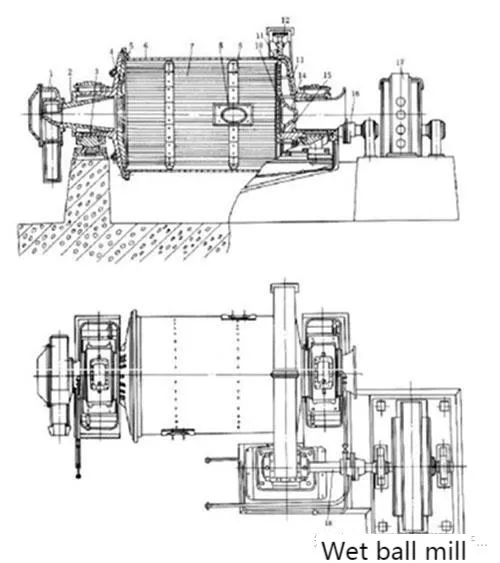
PrincipeLa matière première est mélangée à de l'eau (ou à d'autres liquides tels que des dispersants) dans une certaine proportion pour former une boue, qui est ensuite introduite dans un broyeur à boulets pour y être broyée. La boue broyée est séparée en produits de différentes granulométries par classification hydraulique (par exemple, classificateur à spirale, hydrocyclone) ou filtration et séchage (par exemple, filtre-presse, sécheur par atomisation).
Flux de processus typique :
- Broyage des matières premières
→ 2. Broyage par broyeur à boulets humide (ajout d'eau : généralement 30%~50% de matière première)
→ 3. Classification des boues (séparation des particules grossières pour le rebroyage)
→ 4. Déshydratation et séchage (si de la poudre sèche est nécessaire)
→ 5. Produit fini.
2. Différences fondamentales
| COMPARAISON ARTICLES | BROYAGE À BOULETS À SEC | BROYAGE À BOULETS HUMIDE |
| Médias | Principalement des billes d'acier | Billes principalement en céramique (alumine, zircone) |
| Forme du produit | Poudre sèche | Poudre humide |
| Finesse du produit | Principalement pour le broyage grossier : généralement 100-325 mesh (45-150 μm). La distribution granulométrique est large et la teneur en poudre fine est faible. | Broyage moyen-fin à ultra-fin : peut atteindre 325 mesh à l'échelle nanométrique (D50 < 1 μm). Granulométrie uniforme avec une forte proportion de poudre fine (contrôlée avec précision par classification hydraulique). |
| Consommation d'énergie | Élevé : Il faut surmonter la friction entre les particules de matière sèche et le système de dépoussiérage augmente la consommation d'énergie. | Moyen à faible : La fluidité du boue réduit la friction |
| Scénarios applicables | Procédés sensibles à l'humidité (tels que les matériaux réfractaires et les matières premières céramiques) | Scénarios nécessitant une préparation de lisier (tels que fusion d'alumine et émaux céramiques) |
| Exigences environnementales | Il est nécessaire de contrôler strictement les émissions de poussières (en utilisant des dépoussiéreurs à haut rendement). | Un traitement des eaux usées est nécessaire (comme le recyclage ou le traitement par sédimentation). |
3. Résumé et recommandations d'application
Il n’existe pas de supériorité ou d’infériorité absolue entre les procédés de broyage à boulets secs et humides pour la bauxite ; l’essentiel réside dans une correspondance précise avec des exigences spécifiques :
Le broyage à sec à boulets se distingue par son flux de production court et sa grande adaptabilité aux conditions de faible humidité, ce qui le rend adapté aux applications sensibles à la teneur en eau, comme les matériaux réfractaires et le formage à sec. Cependant, ses difficultés de contrôle des poussières et ses limitations en termes de granulométrie doivent être optimisées par des améliorations des équipements (par exemple, un dépoussiérage à haut rendement et un broyage multi-étages).
Le broyage humide à boulets est indispensable pour les céramiques haut de gamme et l'alumine haute pureté grâce à la finesse de sa granulométrie, à sa faible pollution par les poussières et à sa compatibilité avec les procédés humides. Malgré les problèmes de traitement des eaux usées et la complexité des procédés, sa forte valeur ajoutée sur le marché des poudres ultrafines est remarquable.
Dans la production réelle, il est nécessaire de formuler le plan de processus optimal en prenant en compte de manière exhaustive des facteurs tels que les caractéristiques des matières premières et l'application du produit, etc., pour parvenir à un équilibre entre les avantages économiques et les performances techniques.
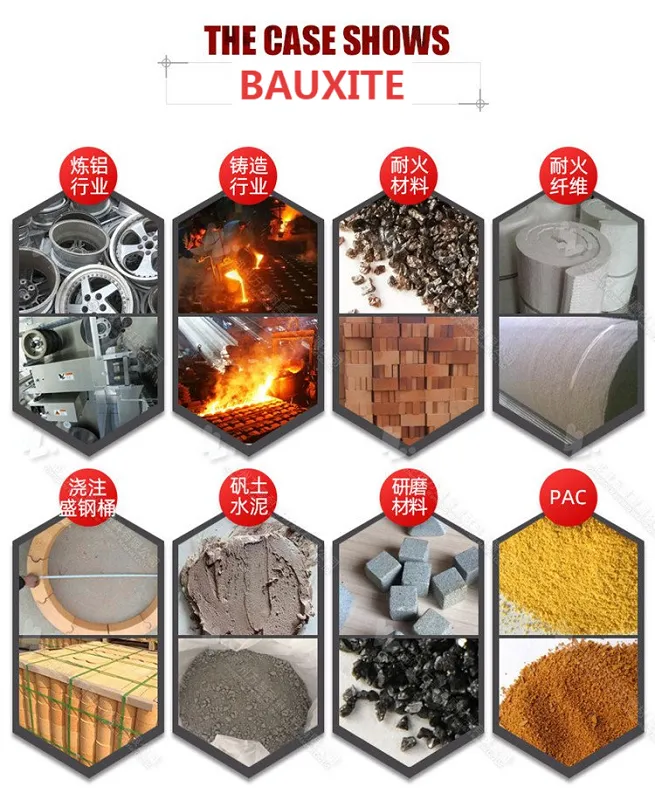

Qingdao Epic Powder Machinery Co., Ltd. est un professionnel fabricant Spécialisé dans les équipements de traitement des poudres, notre entreprise bénéficie de plusieurs décennies d'expérience en production et d'une expertise technique approfondie. Le broyeur à boulets est l'un de nos principaux produits. Il peut être utilisé seul ou associé à un classificateur. Grâce à ses excellentes performances et à son prix abordable, notre broyeur à boulets est plébiscité par les consommateurs depuis de nombreuses années.
Notre pproduits comprennent :
Équipement de broyage : Broyeur à billes, broyeur à jet, broyeur classificateur à air, broyeur à rouleaux, etc.
Classification des équipements: Comprend 5 types de classificateurs d'air– HTS, CCI, CTC, MBS et TDC.
Équipement de modification de surface : Modificateur de broyeur à broches, modificateur de broyeur à trois rotors et modificateur de turbo-broyeur, etc.
Équipement auxiliaire : Armoire de commande, filtre à sac, ventilateur d'aspiration, élévateur à godets, etc.
Si vous avez besoin d'un broyeur à boulets pour traiter la bauxite ou d'autres matériaux, n'hésitez pas à nous contacter. Notre entreprise dispose d'une équipe de professionnels qui suit l'ensemble du processus, du conseil technique à la conception, en passant par l'installation et la mise en service des équipements, la formation des opérateurs et la mise à niveau technologique, pour vous simplifier la vie.
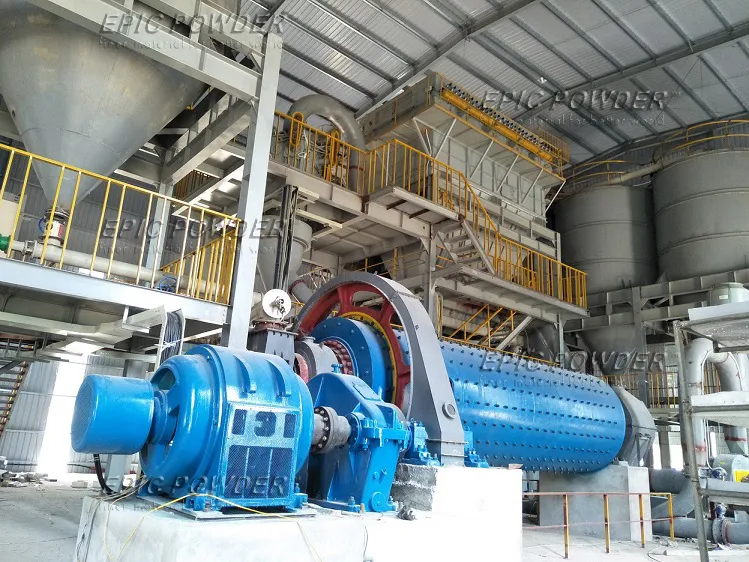
Contactez Epic Powder, et laissez notre équipement spécialisé renforcer votre traitement de poudre - pour une efficacité accrue et plus d'économies d'énergie.
